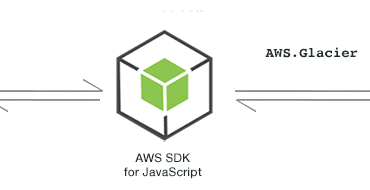AWS S3 Glacier storage is intended to be a long-term archiving solution, which is both affordable and secure. It’s currently divided into two sub-services Amazon S3 Glacier and S3 Glacier Deep Archive, each with its own access options and pricing structure.
AWS S3 Glacier storage is not as slow as its name might suggest
If you use the standard AWS S3 Glacier, then you have a choice of three retrieval options:
Expedited retrievals typically return data in 1-5 minutes
Standard retrievals typically return data in 3-5 hours
Bulk retrievals typically return data in 5-12 hours
If you opt for AWS S3 Glacier Deep Archive, then you have a choice of two retrieval options, standard and bulk, which typically return data in 12 hours and 48 hours respectively. Take a look at our advanced aws S3 cost calculator built by our CloudySave’s cloud economists.
In short, AWS S3 Glacier has moved on from the days when retrievals really were as slow (and sometimes as painful) as you might think from the name. It isn’t remotely suitable for systems where fast access is a must (for example, the average customer-facing app) but these days it can certainly be used for the likes of active archiving.
AWS S3 Glacier storage is exceptionally robust
According to AWS, S3 Glacier storage is designed for 99.999999999% durability with 99.9% availability. To achieve this, data objects are spread across multiple (at least three), geographically-separated Availability Zones (in the same region) so that the data can resist the destruction of one entire Availability Zone.
AWS S3 Glacier has extensive security and compliance capabilities
AWS S3 Glacier utilizes Amazon S3 Object Lock to create WORM (Write Once Read Many) storage. It also supports integration with AWS CloudTrail to log, monitor and retain storage API call activities and has three different forms of encryption. This means that AWS S3 Glacier storage is compliant with the requirements of just about any regulatory program you can name (and probably many you can’t). In addition to supporting key U.S. focused compliance programs such as SEC Rule 17a-4, HIPAA/HITECH, FedRAMP and FISMA, it supports the international PCI-DSS program and even the EU’s GDPR scheme.
AWS S3 Glacier has extensive integration capabilities as well as third-party support
AWS services all tend to integrate well with each other and, in spite of the relatively slow pace at which it operates, AWS S3 Glacier is no exception. They also tend to be well-supported by third-party vendors and again AWS S3 Glacier is no exception, quite the opposite in fact. The fact that AWS S3 Glacier offers competitive pricing and high reliability means that it’s often the cloud solution of choice for third-party vendors working in areas such as archiving, backup & recovery and disaster recovery.
AWS S3 Glacier makes a superb replacement for tape libraries
Archiving has long been a sensitive issue for companies. No storage medium is ever guaranteed to be 100% completely secure and even if somebody did manage to invent a storage medium which was guaranteed not to degrade or be damaged (at least not for a certain period if stored properly), then you would still have the risk of accidental damage or theft.
This is exactly why some companies adopted a strategy of “double-archiving” using hard drives and magnetic tapes. Others opted for magnetic tapes purely for reasons of affordability compared to the other solutions available at the time. In either case, there are numerous companies, including many SMBs, which are currently stuck with libraries of magnetic tapes which require specialized maintenance. Getting these libraries onto a solution such as AWS S3 Glacier can make life easier for everyone at a very affordable cost.
Any company which is considering implementing a magnetic tape library is strongly recommended to check out AWS S3 Glacier very thoroughly before making a final decision because this approach often requires significant upfront investment (and ongoing maintenance costs), both of which can be avoided with AWS S3 Glacier storage.
AWS S3 Glacier is also great for digitization projects
The paperless office is great in theory, but for many companies there is some way to go before this becomes a reality. In some cases, there are legal issues at play, which require certain documents to be kept in paper format (although it can be very wise to have digital copies of them as a back-up). In many cases, however, companies have simply built up significant archives in paper format (or photos or other analog media) and are struggling to find the time to go through them properly.
AWS S3 Glacier offers a great “interim” solution, in that it can affordably hold large quantities of data for an extended period, thus making it possible for companies to “digitize first and check later”. This can make it possible to clear out valuable office real estate without the risk of losing content which still has genuine value to the organization.
